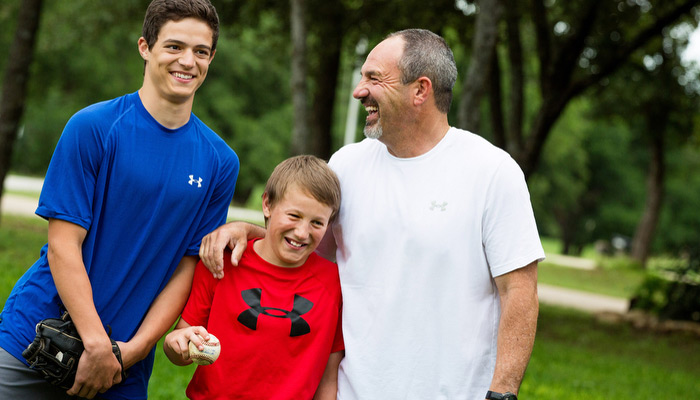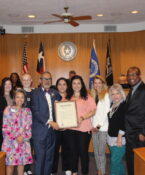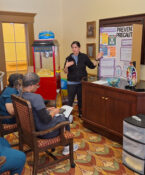Putting Dad back in the game
Teamwork matters to Dale Akers.
Husband, dad to two sons, baseball player and coach – he’s been there and done what it takes to help a team beat a problem.
And a problem he did have.
Years of pain in his chest and abdomen and debilitating shortness of breath confounded one physician after another.
“It felt like heart attack symptoms,” Akers said.
He made two visits to the Mayo Clinic in Minnesota. There and closer to home, more than two dozen doctors treated him. One of them removed a rib; none of them helped him get better.
It took a team of physicians at UNT Health Science Center in Fort Worth to solve Dale Akers’ medical mystery.
But first came six painful years. “Back guys, neck guys, well-known sports medicine centers where they treat professional athletes — they all finally just shook their heads,” Akers said. “I couldn’t tell you how much I’ve spent on co-pays and stuff.”
He’d been athletic all his life, running, playing baseball and coaching at a high school and at Louisiana Tech. But now, in his mid-40s, he struggled to throw a ball around with his kids.
But Akers now has his life back, after team treatment at UNT Health Science Center by Albert Yurvati, DO; Clay Walsh, DO (no longer with UNTHSC); and Thomas Crow, DO.
In March 2014, Dr. Yurvati performed surgery to correct damage to Akers’ xiphoid process, a part of the breastbone. “Hindsight, I know how I bent it,” Akers said. “I was playing football with the kids, and I fell on the ball.”
At the time, no one who treated him knew to consider the xiphoid as the root of his sharp chest pains.
After years of failed treatment, a co-worker showed him a magazine article about Dr. Yurvati’s success correcting xiphoid damage in a high school athlete. “I read the story and I said, ‘My symptoms exactly.’”
“Yurvati got a CT scan, said ‘It’s your xiphoid process,’ did the operation, and for the first time since 2009, I felt good.”
The team of doctors was still at work, because for years Akers’ body had tried to compensate for the xiphoid pain.
“A rib kept popping out of place, so Dr. Yurvati referred me to Dr. Clay Walsh,” who treated the rib with osteopathic manipulation.
“That helped a lot, but I still had some pain,” Akers said. That prompted another team hand-off, this time to Dr. Crow.
“I told Dr. Crow I’d been working on this for a long time,” Akers said. “He told me, ‘I’m hard-headed and I don’t give up.’”
Today, Akers is down to just one visit every six weeks with Dr. Crow.
“The UNTHSC doctors worked as a team to heal me and help me,” Akers said. “I’m 80 percent better. I want the other 20 percent, and Dr. Crow wants that, too.”




![Uyen Sa Nguyen Scaled[58]](https://www.unthsc.edu/newsroom/wp-content/uploads/sites/16/Uyen-Sa-Nguyen-scaled58-145x175.jpg)

Social media